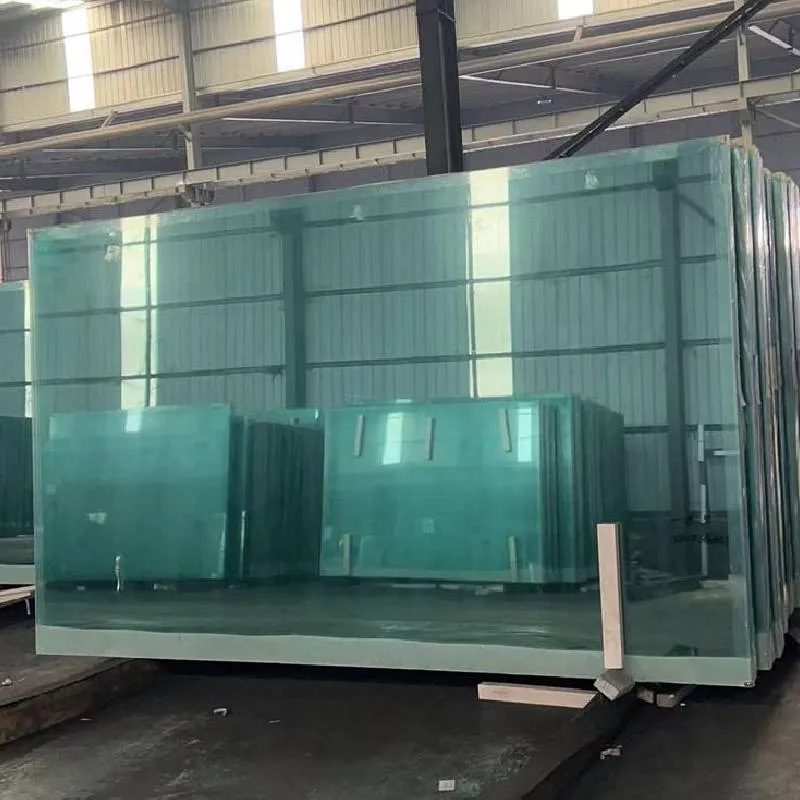The Flat Glass Production Process An Overview
Flat glass is an essential material widely used in various applications, from architectural windows to automotive windshields. The production of flat glass involves several critical steps that ensure the final product meets industry standards for quality and performance. This article explores the flat glass production process, highlighting its key stages and technological advancements that enhance efficiency and sustainability.
Raw Materials
The primary ingredients for flat glass production are silica sand, soda ash, and limestone. These raw materials are carefully sourced and transported to the glass manufacturing facility. Additional materials such as cullet, which is recycled glass, can also be added to the mix to reduce energy consumption and enhance the mixture’s properties. The use of cullet lowers the melting temperature needed for the glass production process, making it an environmentally friendly option.
Melting
The first critical step in the flat glass production process is melting. The raw materials are mixed in precise proportions and fed into a furnace, where they are heated to temperatures of approximately 1,700 degrees Celsius (around 3,092 degrees Fahrenheit). The intense heat causes the materials to melt and form a molten glass mass. Modern furnaces are designed for energy efficiency, with many incorporating regenerative technologies that recover heat, thereby reducing fossil fuel consumption.
Forming
Once the glass has reached a molten state, it is time for the forming process. There are several methods to achieve this, but the float glass process is the most common. In this method, the molten glass is poured onto a bath of molten tin, where it spreads out and forms a flat, even surface. The floating process allows for uniform thickness and smooth surfaces, essential characteristics for quality flat glass.
As the glass moves along the tin bath, it gradually cools and solidifies. It is then removed from the bath and cut into sheets of the desired size. This step is critical, as any imperfections during forming can result in significant defects in the final product.
flat glass production process
Annealing
After cutting, the glass sheets must undergo annealing, which involves slowly cooling the glass to relieve internal stresses resulting from the rapid cooling during the forming process. This is done in a controlled environment, typically in an annealing lehr. The gradual cooling helps to ensure structural integrity and optical clarity in the final product.
Surface Treatment
To enhance the properties of the flat glass, several surface treatments may be applied. These treatments can include coating with chemicals to improve durability, reflective properties, or UV resistance. Depending on the intended use—whether for architectural glazing, automotive applications, or solar panels—these treatments can significantly alter the glass's performance characteristics.
Quality Control
Quality control is an essential aspect of flat glass production. Throughout the manufacturing process, rigorous testing is conducted to ensure that the glass meets specified standards. This includes checking for clarity, thickness, and absence of defects such as bubbles or impurities. Advanced optical and mechanical testing equipment is used to ensure the final product complies with industry requirements.
Conclusion
The flat glass production process is a complex and highly controlled operation that balances the need for quality and efficiency. With continued advancements in technology and an emphasis on sustainability through recycling and energy conservation, the flat glass industry is poised for growth. As the demand for innovative glass applications expands, the methods and processes for producing flat glass will likely evolve, leading to even higher standards of performance and environmental responsibility.
 Afrikaans
Afrikaans  Albanian
Albanian  Amharic
Amharic  Arabic
Arabic  Armenian
Armenian  Azerbaijani
Azerbaijani  Basque
Basque  Belarusian
Belarusian  Bengali
Bengali  Bosnian
Bosnian  Bulgarian
Bulgarian  Catalan
Catalan  Cebuano
Cebuano  Corsican
Corsican  Croatian
Croatian  Czech
Czech  Danish
Danish  Dutch
Dutch  English
English  Esperanto
Esperanto  Estonian
Estonian  Finnish
Finnish  French
French  Frisian
Frisian  Galician
Galician  Georgian
Georgian  German
German  Greek
Greek  Gujarati
Gujarati  Haitian Creole
Haitian Creole  hausa
hausa  hawaiian
hawaiian  Hebrew
Hebrew  Hindi
Hindi  Miao
Miao  Hungarian
Hungarian  Icelandic
Icelandic  igbo
igbo  Indonesian
Indonesian  irish
irish  Italian
Italian  Japanese
Japanese  Javanese
Javanese  Kannada
Kannada  kazakh
kazakh  Khmer
Khmer  Rwandese
Rwandese  Korean
Korean  Kurdish
Kurdish  Kyrgyz
Kyrgyz  Lao
Lao  Latin
Latin  Latvian
Latvian  Lithuanian
Lithuanian  Luxembourgish
Luxembourgish  Macedonian
Macedonian  Malgashi
Malgashi  Malay
Malay  Malayalam
Malayalam  Maltese
Maltese  Maori
Maori  Marathi
Marathi  Mongolian
Mongolian  Myanmar
Myanmar  Nepali
Nepali  Norwegian
Norwegian  Norwegian
Norwegian  Occitan
Occitan  Pashto
Pashto  Persian
Persian  Polish
Polish  Portuguese
Portuguese  Punjabi
Punjabi  Romanian
Romanian  Russian
Russian  Samoan
Samoan  Scottish Gaelic
Scottish Gaelic  Serbian
Serbian  Sesotho
Sesotho  Shona
Shona  Sindhi
Sindhi  Sinhala
Sinhala  Slovak
Slovak  Slovenian
Slovenian  Somali
Somali  Spanish
Spanish  Sundanese
Sundanese  Swahili
Swahili  Swedish
Swedish  Tagalog
Tagalog  Tajik
Tajik  Tamil
Tamil  Tatar
Tatar  Telugu
Telugu  Thai
Thai  Turkish
Turkish  Turkmen
Turkmen  Ukrainian
Ukrainian  Urdu
Urdu  Uighur
Uighur  Uzbek
Uzbek  Vietnamese
Vietnamese  Welsh
Welsh  Bantu
Bantu  Yiddish
Yiddish  Yoruba
Yoruba  Zulu
Zulu 

